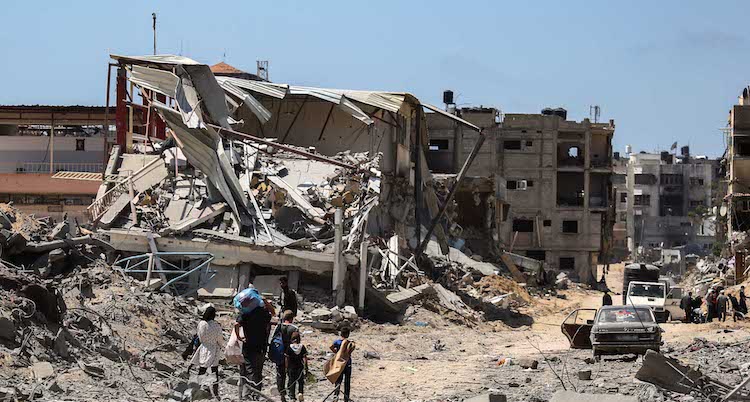Is Israel’s war to topple Hamas in Gaza going unnecessarily slowly? That’s become the conventional wisdom. But the tragic deaths of four IDF soldiers in a booby-trapped building in Khan Younis challenge that assumption.
Chen Gross of a commando unit and Yoav Raver of an engineering unit were killed along with two other, as-yet-unnamed soldiers when they entered a building in Southern Gaza that was rigged with explosives, and the structure collapsed on the four of them.
After the announcement, IDF Spokesman Brig. Gen. Effie Defrin answered questions from the media. Unsurprisingly, he was asked whether it was truly necessary to put the soldiers in the kind of danger that resulted in the four deaths in Khan Younis. His response: “Sometimes there’s no choice but to investigate a tunnel route. To do this, without being harmed by an explosive, we carry out a variety of methods,” one of which is in-person inspection.
Perilous as this no doubt sounds (and is), one can easily imagine scenarios in which there really is no choice but for the soldiers to investigate a building themselves, with the gear they’ve got on them. With the large amount of cameras and remote triggers Hamas and other Gazan forces have left behind, sometimes standing around and waiting for backup or for a flyover of some sort really isn’t in the cards. Yet a prospective tunnel can’t be left unmolested either; just a week ago, IDF soldiers found a tunnel hundreds of meters long and with several exits. The troops reportedly “spotted a cell of operatives emerging from one of the shafts” and neutralized the militants. Point is, the terror tunnels aren’t hypothetical future threats; they are still active war zones whose presence puts every single soldier and civilian in the vicinity in grave danger.
The IDF isn’t doing this for fun, in other words. Its missions continue to have a clear and definable purpose and they carry inherent danger.
This also helps explain the level of physical destruction in Gaza. Rather than being indicative of some sort of pyromania on the part of the IDF, which is what the media would like you to believe, these structures must be destroyed. They cannot be lived in. They aren’t inhabitable—or even safe for people to live and work near. They are boobytrapped, rigged with explosives, and contain entrances (or exits) to tunnels from which a cell of armed terrorists will eventually emerge into daylight.
Which is to say: These buildings were already, for all intents and purposes, destroyed by Hamas. The choice isn’t between using them as shelter for families or demolishing them; the choice is merely who ultimately demolishes them. The fate of these buildings was sealed by Hamas long ago. Sometimes they can be demolished safely, and sometimes they cause the deaths of Israeli soldiers. There is no third option.
In fact, just a day earlier reporter Stav Levaton explained what the current march through Khan Younis entails: “The city is laced with terror infrastructure, including a sprawling tunnel network and buildings rigged with explosives, military officials said. Every step forward requires methodical clearing, turning each advance into a battle not only against Hamas gunmen, but against the terrain itself.”
In the rubble of one ostensibly “civilian” home, troops found several unused rockets. This is not in some far-off place: All of this was in sight of Nir Oz, one of the Israeli communities that suffered a great deal from the Gazan invasion and slaughter of Oct. 7.
Nor is Khan Younis an exception. Less than a year ago, reports out of Rafah were that 14,000 buildings were boobytrapped and that nearly 100,000 in all of Gaza were rigged. The walls of houses often have sniper holes neatly placed in them, making every building that isn’t rigged with explosives a possible Hamas fortification.
It has been 20 months since the start of this war, 19 months of this type of grueling battlefield progress. And every step the IDF takes further exposes the destruction that Hamas made inevitable.


















